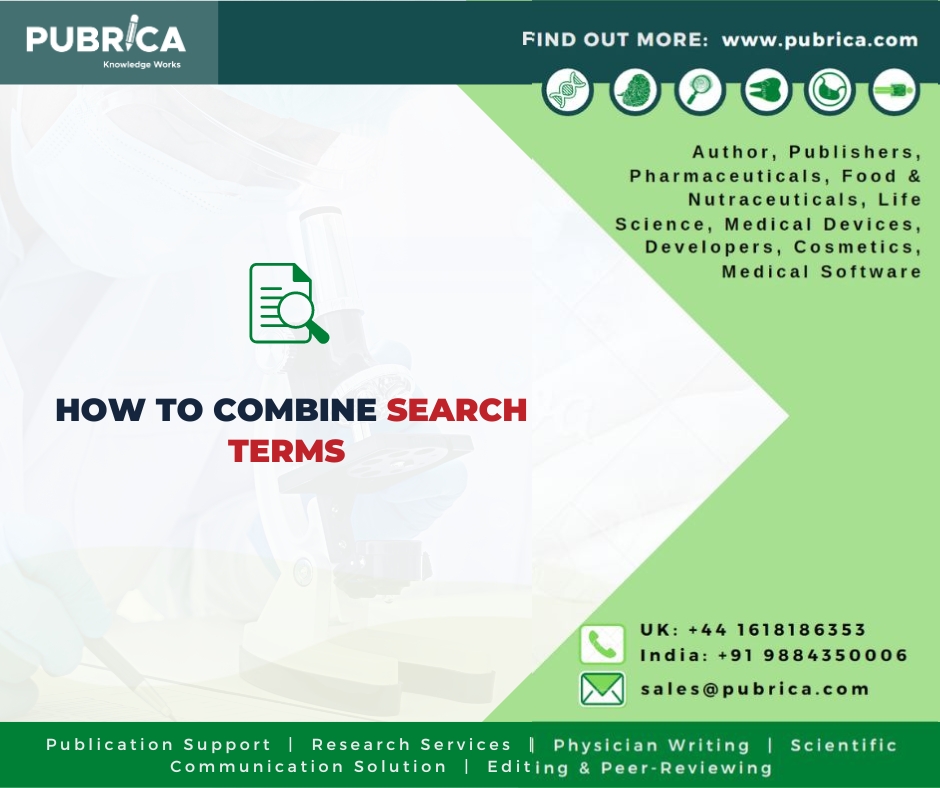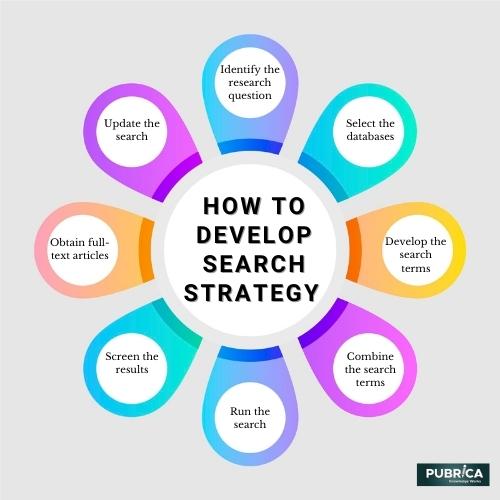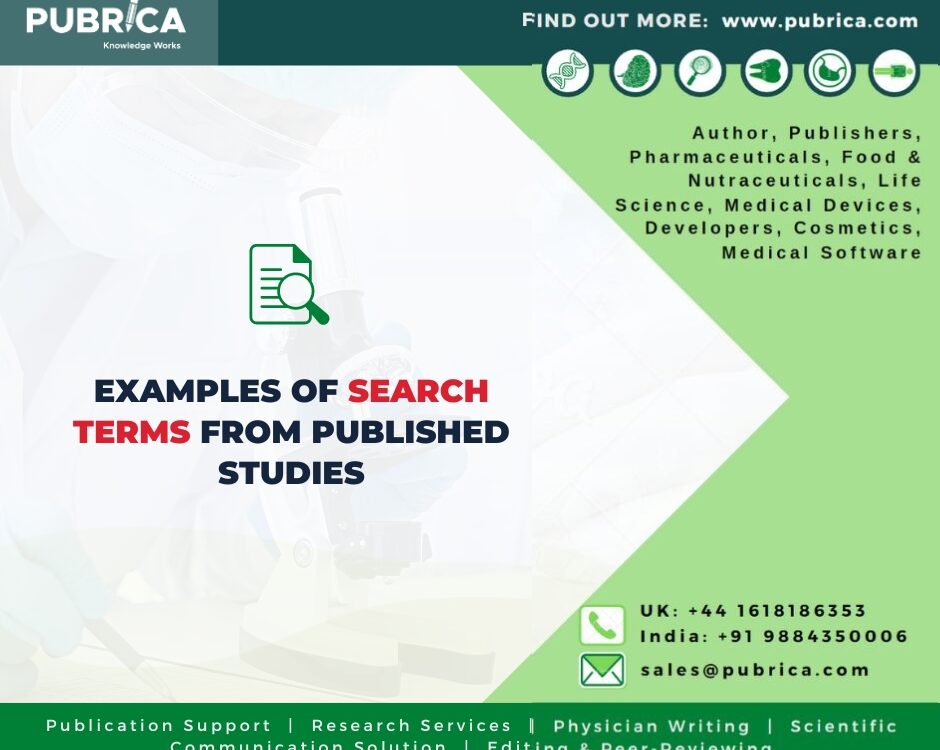
How to Combine Search Terms for Research paper publication?
May 8, 2023
Why search Strategy is important While Writing a Systematic Review Manuscript
May 19, 2023In brief
A search strategy is a structured set of key phrases that are used to search a database. In order to return reliable results, the search strategy integrates the important components of your research paper question.
Introduction
Developing a search strategy for a systematic review involves several steps:
- Identify the research question: Start by clearly defining the research question and identifying the key concepts and terms that are relevant to the question.
- Select the databases: Determine which databases are most appropriate for the research question. Common databases used in systematic reviews include MEDLINE, EMBASE, Cochrane Library, PsycINFO, and CINAHL.
- Develop the search terms: Identify relevant terms and synonyms for the key concepts in the research question. These terms should be specific and not too broad or too narrow. Consider using MeSH terms or other controlled vocabulary terms.
- Combine the search terms: Use Boolean operators (AND, OR, NOT) to combine the search terms, and use truncation or wildcards to capture different forms of the search terms. Be sure to account for variations in spelling, pluralization, and word order.
- Run the search: Run the search strategy in each database and record the number of hits.
- Screen the results: Screen the titles and abstracts of the search results to identify potentially relevant studies. Exclude studies that clearly do not meet the inclusion criteria.
- Full-text articles: Obtain the full text of potentially relevant studies and screen them to determine eligibility for inclusion in the systematic review.
- Update the search: Repeat the search periodically to identify any new studies published since the initial search.

It is essential to document the search strategy in detail, including the search terms used, the databases searched, and the number of hits at each stage. This information should be reported in the systematic review according to the Preferred Reporting Items for Systematic Reviews and Meta-Analyses (PRISMA) guidelines.
KEEPING A RECORD OF YOUR SEARCH ACTIVITY
To maintain track of productive search keywords or to assist others in following your steps and obtaining the same results, good search techniques may require keeping a search diary or document recording your search activity.
This record could be a document, table or spreadsheet with the following:
- The names of the sources you searched for and the service provider you used to access them, such as Web of Science (Thomson Reuters) or Medline (Ovid). Include any more literary materials you consulted as well.
- The search techniques you used to look for information from various sources (such as Medline and Web of Science) can be included as an appendix to your work. This offers more information on the following:
- Using a keyword or subject title as part of your search
- which search keywords (words and phrases) you entered
- any search strategies you used (such as adjacency, truncation, etc.)
- How you (AND/OR) combined your search keywords? More information about boolean searching may be found in the database help section.
The quantity of search results from every source and technique. This may be the proof you require to establish a gap in the literature and to support the validity of your research topic.
About Pubrica
The research and writing teams at Pubrica create scientific and medical research papers that might be helpful tools for writers and practitioners. Pubrica medical writers help you create and rewrite the introduction by letting the reader know about the shortcomings of the chosen area of study. Our professionals know the order in which the narrow subject, problem, and background are followed by the focused area where the hypothesis is offered.
References
Aromataris, Edoardo, and Dagmara Riitano. “Systematic reviews: constructing a search strategy and searching for evidence.” AJN The American Journal of Nursing 114.5 (2014): 49-56.



